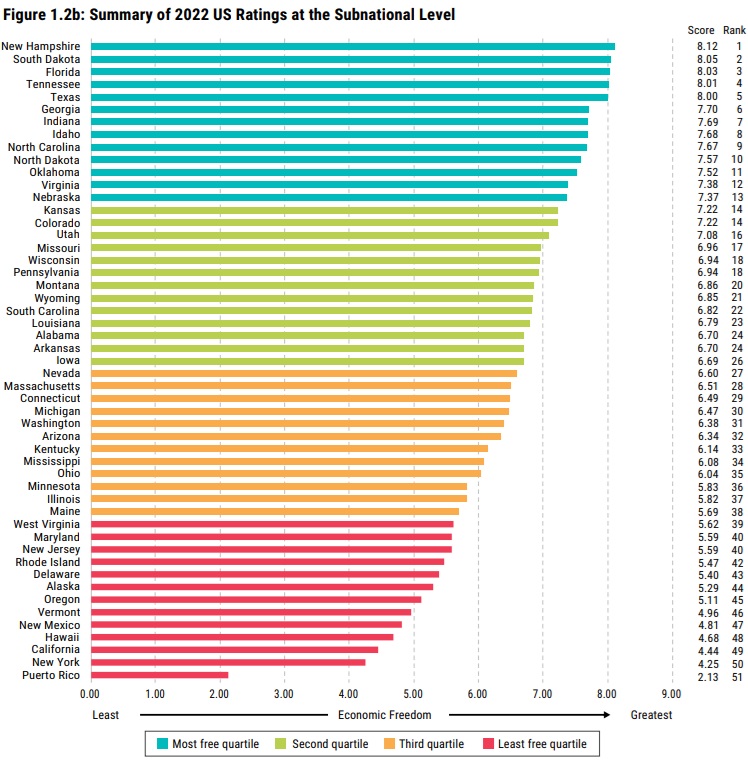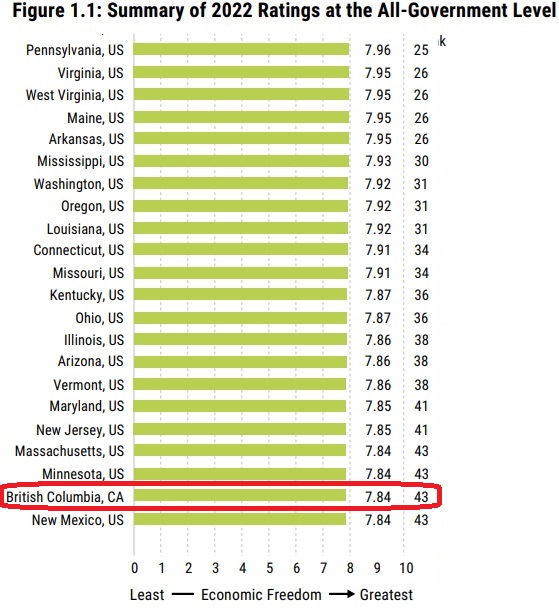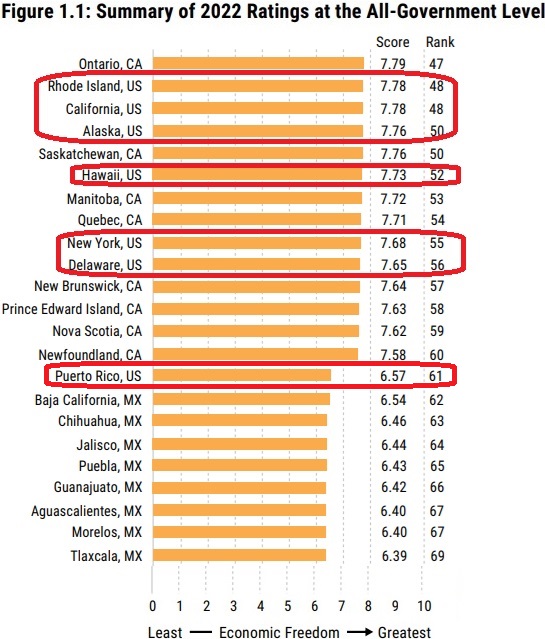Almost every year (2023, 2022, 2021, 2020, 2019, etc), I review the Fraser Institute’s annual report on Economic Freedom of North America.
The 2024 version has just been released, so let’s look at some key findings.
Since three-fourths of my readers are from the U.S., I’ll start with the subnational ranking of American states. New Hampshire is in first place (a common occurrence), followed by South Dakota and Florida.
It’s worth noting that the five best states have no income tax (followed by several states with flat taxes).

I’m sure readers are hardly surprised to see that New York is the worst state, followed by California.
Now let’s look at all of North America, which means measuring economic liberty in American states, Canadian provinces, and Mexican states.
New Hampshire is the freest jurisdiction in North America, though the order of other states changes a bit.
What I find interesting is that only one Canadian province (circled in red) is in the top quartile.

And even when you include the second quartile, only one other Canadian province (also circled in red) appears.

The bottom line is that Prime Minister Pierre Trudeau’s tax-and-spend agenda has been very bad news for Canadians.
Now let’s look at the third quartile.
Except instead of calling attention to Canadian provinces that are above average, I’ve circled in red the American states (and Puerto Rico) that rank way below average.

In this case, Delaware is the worst state (which may explain something about Joe Biden), though New York and California continue to get poor scores.
I’m not going to bother showing the fourth quartile because it is nothing but Mexican states.
Though I will point out that the worst place for economic liberty in all of North America is Mexico City. So it’s probably not good news for Mexico that the country’s new president, Claudia Sheinbaum, is the former mayor of that benighted locality.
Let’s close by sharing some important information from executive summary of the 2024 report.
Among those North American jurisdictions that were in the bottom 25% for all-government economic freedom (averaged from 2013 to 2022) income per person in 2022 was US$2,997. But among those jurisdictions that were in the top 25% on all-government economic freedom, income per person was US$62,184. In other words, incomes in the freest North American jurisdictions were 21 times higher than in the least-free jurisdictions. Incomes are not only higher in economically free places, but they tend to grow faster in these places as well. From 2013 to 2022 total income in the freest 25% of North American jurisdictions grew 29% after adjusting for inflation. In the least-free jurisdictions, however, inflation-adjusted income fell 13%. The same patterns hold when we compare jurisdictions within countries. In those places that were the most-free relative to the rest of their country, incomes were, on average, about 3% higher than in the rest of the country. But among those places that were the least-free relative to the rest of their country, incomes were 6.8% below the country average. Among the freest US states, population grew 10 times faster than it did in the least-free from 2013 to 2022. Total employment in these states also grew about three times faster than in the least-free states over this time.
The bottom line, as I wrote earlier this year, is that there “is a very strong correlation become market friendly policies and jurisdictional prosperity.”


